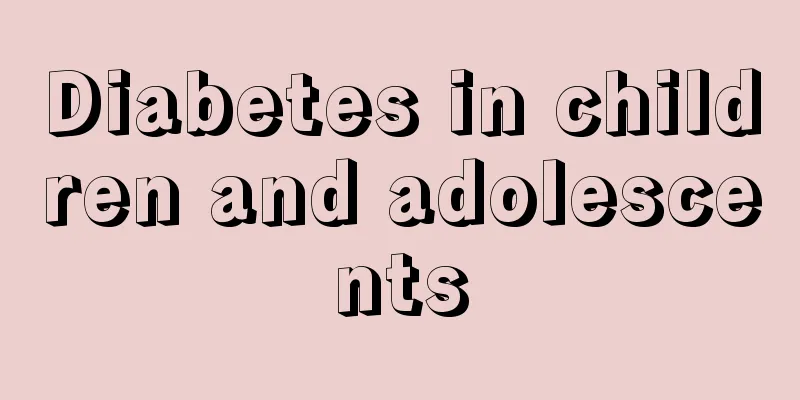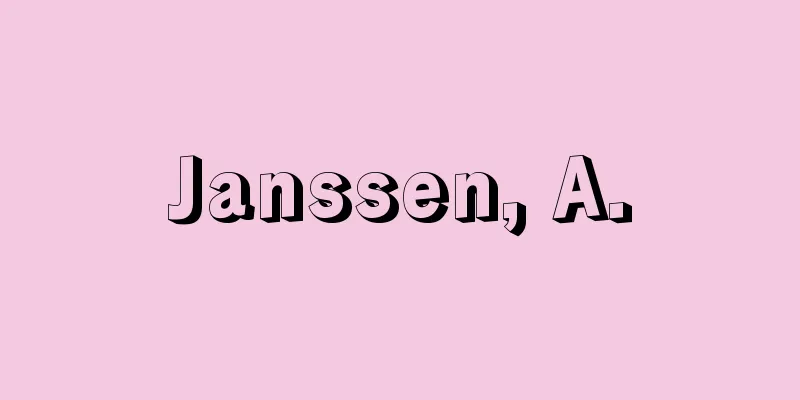Diabetes in children and adolescents

What is the disease?This is diabetes that develops in childhood. There are four classifications of diabetes (types of diabetes), and childhood diabetes includes all four of these types. Today, it is no longer called childhood diabetes, but is called type 1 diabetes or type 2 diabetes. The frequency of disease types is significantly different from that of adults. Most diabetes that develops in people under the age of 10 is type 1 diabetes, and while type 1 diabetes increases in people in their teens, type 2 diabetes also increases. After the age of 20, most people have type 2 diabetes (Figures 10 and 11). Childhood diabetes was previously thought to be the same as type 1 diabetes (almost the same as what was once called insulin-dependent diabetes). However, there have long been type 2 diabetes patients in teenagers in Japan. Recently, along with the increase in obese children, there has been a noticeable increase in obese type 2 diabetes patients. In Japan, along with the increase in type 2 diabetes in adults, it is thought that type 2 diabetes in children is also increasing. What is the cause?1. Type 1 diabetes The cause of type 1 diabetes is the same in both children and adults: pancreatic Other causes include Recently, there has been a lot of attention on type 1 diabetes that develops in a fulminant form, but this type of disease is extremely rare in children. ②Type 2 diabetes The causes of type 2 diabetes in children are thought to be the same as those of type 2 diabetes in adults: insulin deficiency and insulin resistance. Japanese people tend to be thinner than Westerners, and because they are an agricultural people, their insulin secretion reserve capacity is inferior to Westerners. In this condition, if they eat a high-calorie, high-fat diet, it is thought that blood sugar levels are more likely to rise. On the other hand, deterioration of insulin action (called insulin resistance) in tissues that consume sugar, such as muscle and fat tissue (peripheral tissues), can also cause type 2 diabetes. It is thought that this condition allows the body to maintain peripheral tissue activity even without much energy. Both mechanisms are genetically controlled, so type 2 diabetes is said to be inherited from parents to children. How symptoms manifest(Table 9)Symptoms of type 1 diabetes appear suddenly. Common symptoms include sudden weight loss in children who are not obese, increased water consumption, frequent urination, and increased bedwetting. Type 2 diabetes, like in adults, is asymptomatic, so school urine tests are conducted once a year. Of course, there are cases where an obese child loses weight suddenly and is diagnosed with type 2 diabetes. A typical example of this is commonly known as plastic bottle syndrome, also known as soft drink ketosis. When a large amount of monosaccharides is ingested at once, the body's sugar metabolism does not work properly, and the patient develops sudden ketoacidosis (a condition in which abnormally high blood sugar and ascites are accompanied by the production of ketones in the body, and is often accompanied by some form of impaired consciousness) which at first glance appears to be type 1 diabetes. Testing and diagnosisIn addition to general blood biochemistry tests, urine ketones, and chest X-rays, we also perform tests essential for diagnosing diabetes, such as blood glucose, urinary sugar, and HbA1C . In cases of sudden onset, blood gas analysis and pancreatic specific autoantibody tests (anti-GAD antibody, IA2 antibody, and ICA) are essential. Once blood sugar levels have stabilized, endogenous insulin secretion is assessed. In order to check for the development of complications (in the case of type 2 diabetes, even if the onset of the disease is sudden, complications may have developed beforehand), tests are performed on the fundus and albumin in the urine. Treatment methods① Treatment for type 1 diabetes Treatment is with insulin preparations. There are various types of insulin preparations, including ultra-rapid-acting, rapid-acting, intermediate-acting, mixed, and long-acting, and there are also various types of injectors, including refillable and disposable, so you can choose the insulin preparation that suits your lifestyle. In childhood, two injections of mixed insulin per day and rapid-acting insulin injections as needed are sufficient. Once a child reaches school age and is able to give injections at school, the easiest way to fit this into their lifestyle is to give three injections of rapid or ultra-rapid-acting insulin before meals and one injection of intermediate-acting insulin before going to sleep. If you are unable to give injections at lunchtime, you can use mixed insulin at breakfast until you are able to do so. Once you reach junior high school age or older, the method that is easiest to fit into your lifestyle is to take three injections of rapid-acting or ultra-rapid-acting insulin before meals and one injection of intermediate-acting or long-acting soluble insulin before sleep. The most important thing about insulin injections is to work with your doctor to find a method that suits your lifestyle. Since there are individual differences in how people accept insulin injections, how insulin injections work, and what and when they eat, it is most important to find a reasonable method to improve blood sugar control. ②Treatment for type 2 diabetes Oral hypoglycemic drugs are used depending on whether the patient is suffering from postprandial hyperglycemia alone, whether the patient still has endogenous insulin secretion ability, and whether the patient is obese. What to do if you notice an illness If you notice any symptoms of diabetes, please immediately visit a specialized medical institution (pediatrics, internal medicine, etc.). In the case of type 1 diabetes, the state of ketoacidosis If you have type 2 diabetes, by the time you realize it's already too late, so be sure to have a urine test at school every year. Yasuko Uchigata "> Figure 10. Types 1 and 2 of HIV detected under age 30 "> Figure 11 Age of patients with type 1 and type 2 diabetes... "> Table 9 Points to distinguish between type 1 and type 2 diabetes Source: Houken “Sixth Edition Family Medicine Encyclopedia” Information about the Sixth Edition Family Medicine Encyclopedia |
どんな病気か小児期に発症した糖尿病のことです。糖尿病の病型分類(糖尿病の種類)には4つありますが、小児糖尿病にはこの4つの病型の糖尿病がすべてあります。今日では小児糖尿病といわず、1型糖尿病あるいは2型糖尿病などといいます。 病型頻度は大人とは大きく異なります。10歳未満で発症する糖尿病は1型糖尿病がほとんどで、10代になると1型糖尿病は増加しますが、2型糖尿病も増えてきます。20歳以降になると、2型糖尿病がほとんどになります(図10、図11)。 小児糖尿病は、以前には1型糖尿病(昔はインスリン依存型糖尿病といわれていたものとほぼ同じ)とイコールのように思われていました。しかし、10代の子どもでも以前から2型糖尿病患者が日本には存在していました。最近は肥満小児の増加とともに肥満の2型糖尿病患者の増加が目立ちます。日本では大人の2型糖尿病の増加とともに、子どもの2型糖尿病も増えてきていると考えられます。 原因は何か①1型糖尿病 1型糖尿病の原因は子どもでも大人でも変わらず、膵臓の それ以外の原因は、 最近、劇症タイプで発症する1型糖尿病が注目を集めていますが、この病型は子どもには極端に少ないものです。 ②2型糖尿病 子どもの2型糖尿病の原因は大人の2型糖尿病の発症原因と同じく、インスリンの分泌不全とインスリン抵抗性が考えられます。もともと日本人は欧米人に比べてやせ型で、農耕民族であるためにインスリンの分泌予備能力は欧米人にくらべて劣っています。この状態で高カロリー、高脂肪食をとっていると、血糖の上昇が起こりやすいと考えられます。 一方、筋肉や脂肪組織など糖を消費する組織(末梢組織)におけるインスリン作用の劣化(インスリン抵抗性という)も2型糖尿病の原因となります。多くのエネルギーがなくても末梢組織の活動性を保つことができる体質になっていると考えられます。2つの機序とも遺伝的に制御されているので、2型糖尿病は親から子へ遺伝するといわれています。 症状の現れ方(表9)1型糖尿病の症状の現れ方は急激です。肥満していない子どもが急激にやせてくる、水をよく飲む、トイレが近くなった、夜尿が増えた、などの症状が多くみられます。 2型糖尿病は、大人と同じく無症状です。そのため、学校検尿が毎年1回行われています。 もちろん、肥満児が急激にやせてきて、2型糖尿病と診断される例もあります。この典型例が一般にペットボトル症候群といわれているもので、清涼飲料水ケトーシスとも呼ばれます。一度に大量の単糖類がとられた時、体内での糖代謝がうまくいかなくなり、一見1型糖尿病のように急激なケトアシドーシス(異常な高血糖と腹水と、対内にケトンが産生される状態で、何らかの意識障害を伴うことが多い)で発症してくるタイプです。 検査と診断一般の血液生化学検査、尿中ケトン体、胸部X線検査などのほかに、血糖、尿糖、HbA1Cなど糖尿病の診断に欠かせない検査をします。急激な発症の時は血液ガス分析、膵臓特異的自己抗体の検査(抗GAD抗体、IA2抗体、ICA)が必須となります。 血糖値が落ち着いてから内因性インスリンの分泌能を調べます。 合併症が発症していないかどうか(2型糖尿病の場合は、たとえ急激な発症であってもそれ以前に合併症が進んでいることがあるため)を調べるために、眼底や尿中アルブミンの検査をします。 治療の方法①1型糖尿病の治療法 インスリン製剤による治療を行います。インスリン製剤の種類は超速効型、速効型、中間型、混合型、持続型などがあり、注入器も詰め替えタイプ、使い捨てタイプなどいろいろあるので、自分の生活に合わせたインスリン製剤を選ぶことができます。 小児期は、1日に混合型インスリンを2回注射し、必要に応じて速効型を注射することでほぼ対応できます。学童期になり学校で注射できるようになれば、速効型ないし超速効型の食前3回注射に、睡眠前の中間型1回注射というやり方が最も生活に合わせやすい方法です。昼食時に注射ができなければ、できるようになるまでの間、朝食時に混合型を使用していくこともできます。 中学生以上になれば、速効型ないし超速効型の食前3回と、睡眠前の中間型ないし持続型溶解インスリン1回注射のやり方が、最も生活に合わせやすい方法となります。 インスリン注射のやり方は、自分の生活に合った方法を主治医といっしょに考えていくことが最も大切です。インスリン注射の受け入れ、インスリン注射の効き方、食事内容と食事時間など個々に違いがあるので、無理のない方法を見つけて血糖コントロールを良好にしていくことが最も大事なこととなります。 ②2型糖尿病の治療法 食後高血糖だけの状態か否か、内因性インスリンの分泌能がまだ保持されているかいないか、または肥満しているかどうかで経口血糖降下薬の使い分けをします。 病気に気づいたらどうする 糖尿病の症状に気づいたら、すぐ専門の医療機関(小児科・内科など)を受診してください。1型糖尿病の場合、ケトアシドーシスの状態から 2型糖尿病の場合は、気づいてからではすでに遅いことが多いので、学校での検尿を毎年必ず受けてください。 内潟 安子 "> 図10 30歳未満発見発症1型および2… "> 図11 1型および2型糖尿病患者の年齢… "> 表9 1型糖尿病と2型糖尿病の区別のポ… 出典 法研「六訂版 家庭医学大全科」六訂版 家庭医学大全科について 情報 |
<<: Limestone cave - shounyuudo
Recommend
Kingentei Basho
…(1) The first (?-1838 (Tenpo 9)) A disciple of t...
Permitted length -
…This is called the floodable length, and is show...
Impatiens textori Miq.
An annual plant of the Balsaminaceae family that g...
Gakanji Temple
This temple was built in Changgan, south of the ca...
The Battle of Kokusenya
Joruri Gidayu-bushi (a type of Japanese chant). H...
Difference in price - Isaifu
…The procedure was that the payee would receive t...
Balsa - English spelling balsa
An evergreen tree of the Sterculiaceae family (AP...
"Theory of Conic Sections"
…Apollonius was born in Perga, a small city in As...
Goto - Goto
〘Noun〙① A light lit in front of a god, Buddha, or ...
Outer marker (English notation)
An instrument landing system for airplanes is inst...
Khirokitia
… [Review] As synonyms of dwelling, the first to ...
Moḥammare (English spelling)
...It is the starting point of the railway to Teh...
Arges - Arges
...When Odysseus and his men arrived on the islan...
Daikon (Japanese radish) - Japanese radish
Also known as Oone or Suzushiro. A one- to two-yea...
Xanthos, E.
...From the late 17th century, when the Ottoman E...





![California Standard [Company] - California Standard](/upload/images/67d026565ceed.webp)



